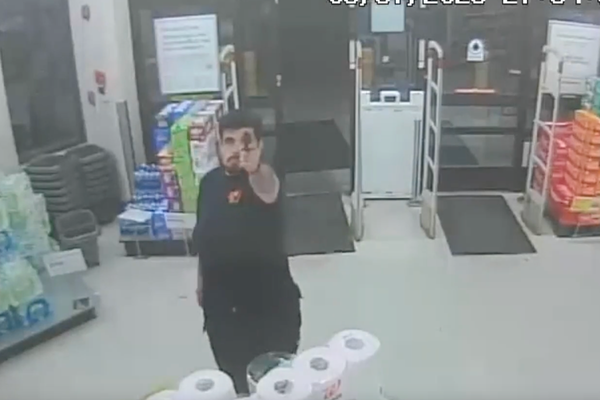
Of course, it’s the FIA’s F1 safety car driver Bernd Maylander. The 51-year-old from Waiblingen, in the southwest of Germany, has the ice-cold veins required to keep F1’s racers in check when things go off the rails.
Maylander is in his 24th season of driving the safety car and has only missed a couple of races since his debut in 2000 – including Monaco in 2001, after he fractured his heel falling over a wall while returning to his hotel ahead of a DTM race at Oschersleben. A race-winner in the 1997 FIA GT championship who conquered the Nurburgring 24 Hours in 2000, Maylander has become well versed in the safety car procedure over the years.
He explains: “The two calls are ‘safety car standby’ and ‘safety car deployed’. And the moment they say ‘deployed’ I’m on the track, find the leader – then I get extra information if there’s an accident, maybe I have to stay right or left at a corner, I get told if there is debris.”
Maylander is partnered in the safety car by Richard Darker, an FIA technical assistant.
“I join him for more weekends than with my wife!” Maylander chuckles. “We’re always ready, same parking position at the end of the pitlane, completely dressed, helmets on, and we get all our information from the race director – always ready to go!
“But, for sure, there are some moments where you slow down, your blood pressure comes down after the start, and we have the live feed on two monitors in the car, so we have the timing and the GPS tracker to monitor all the cars on track. If a car crashes we get to know the g-force that car has sustained in the impact.”
Once deployed, Maylander becomes the FIA’s eyes on track, as running up front puts him in a privileged position when it comes to relating feedback.

“Information is everything in this job, but in the end it’s the radio that tells you to go,” he says. “I have my plan, I know what to do, but any other changes come via the radio. We report back to race control as well, such as in rain conditions. But even if I suggest ‘I think this is red flag’ because it’s too wet, the decision is still up to race control.
“I am only one person who can see what’s going on in front, but they have many more inputs. In particular, I’m in a good place to spot any debris on the track, sometimes the TV might miss them. So we’ve improved over the years.”
Maylander's busiest day of all came in the wild, rain-impacted 2016 Brazilian Grand Prix. On that day, he led the field for 34 laps.
“Now we know, if we’re doing more than five laps, for sure it makes sense to red flag and restart,” he says. “The teamwork has also changed – when I started to work at the FIA we had eight people at the track and right now we are 60.”
Aston Martin joins the team
Mercedes was the sole supplier of the safety car until Aston Martin joined the programme in 2021, when duties became shared between the two cars.
“The first event was at Mugello during the Covid era with the Vantage F1 Edition," says Maylander. "It’s a great sportscar. Its suspension is definitely not the same, so the set-up is a little bit different [to the more powerful Mercedes].
“From the first moment, I felt very good and it’s a nice driveable car. Of course, all drivers would like more power, but with a safety car it’s not so important for us. It’s about the driveability, safety and our tools inside the car – that’s the most important thing for my job.
“I felt comfortable from day one. Of course, the two products from the two brands are different, but at the end of the day I can only say positive things about both.”
The Aston Martin Vantage F1 Edition is a four-litre, twin-turbo, V8-powered coupe producing 528hp, a 0-62mph time of 3.6s and a top speed of 195mph. It features an extra-large rear wing with Gurney flap to produce a “very nice balance” – according to Maylander.

“I really like it,” he says. “I’d sat in one brand’s model for more than 20 years, then along came the Aston Martin and my first thought was, ‘Let’s see how good this car is’ – I’d never driven one before in my life.”
Where this car really differs from the model you can buy for the street is in the trunk, which is packed with electronic system control units, a Wi-Fi router, GPS tracker [exactly the same as fitted to the F1 cars], radio systems and a data logger.
“All the equipment we have inside the car, communications and Wi-Fi systems, GPS mapping, TVs for us to follow the race,” he says. “We have all this assistance inside the safety car, and we run it every day in the morning to check it’s all working.”
Four cameras – two on the rear wing and two mounted on top of the roof, ensure Maylander has a great view of the all-important F1 cars following behind. His steering wheel and the console is standard, but with some extra switchgear for the safety car lights and radio (including a backup) and monitors that show the live TV feed, GPS driver tracker and live timing.
The Vantage has a regular-sized fuel tank, and two cars (four in total, along with the medical cars) are brought to every event – and they alternate their use between F1 and the FIA-sanctioned support races.
Maylander admits they must have the engine running for the duration of the races, to keep its electrical systems and air conditioning powered up “so we’re not in a sauna for two hours”. He usually gets through one set of tyres per car per weekend, but this can stretch to two sets if there’s a lot of action.
He adds: “We have four mechanics with us, looking after tyres, brakes – I think between them they could fix everything.”
Explaining “Turtle-gate”
Despite his essential role, Maylander rarely gets a spotlight put upon on him – but Max Verstappen’s “turtle” jibe about the Vantage in last year’s Australian Grand Prix, when he publicly claimed it was lapping too slowly to allow him to keep sufficient tyre temperatures, certainly stung a little.

“The first 10-15 years, there was never any complaining from the drivers,” says Maylander on the topic. “But we were from a different time. Especially since 2022, with the new F1 cars with bigger tyres, then we heard some things, and I understand their side but they have to see our side too.
“When we, the FIA, deploy the safety car, it’s all about safety first. If you ever think from your seat in the grandstand or on your sofa at home, ‘Why is he driving so slow?’, there is a reason for that.
“I’d say, 90 per cent of the time, I could drive quicker. But there is a background for this. Sometimes the field needs bunching up, sometimes there is an accident we have to move around.
“In Baku, we changed it a little bit so I drove quicker, but then you get more laps behind the safety car, so there are always positive and negative impacts, and we can’t make everyone happy. I can understand it from the driver’s side, if they are losing performance and tyre pressure, I get that they are in race mode with high blood pressure!”
Maylander reflects with pride on his role and doesn’t see himself hanging up his helmet any time soon.
“These 24 years have run like hell,” he laughs. “And, yes, it’s changed a lot, but the basics are still the same. So, I’m ready for the next 10 or 15 years.
“I still get nervous on the grid. And I still have a lot of fun, and it helps to have partners like Aston Martin. Sometimes I feel a bit like James Bond!”








